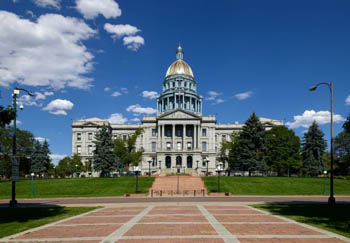It’s budget season in Colorado! The Colorado General Assembly is busy preparing the state’s budget for the upcoming fiscal year (July 1, 2022-June 30, 2023). This year’s $36 billion budget (otherwise known as the “Long Bill”) is still currently being debated in the House and Senate before it heads to the Governor’s desk to be signed. The public can tune in to these legislative debates through live audio and video streams.

How does the state legislature determine how the state’s money will be spent? I’ve broken down the legislative process for passing Colorado’s budget into ten steps:
- The governor proposes a budget in November of each year. This proposed budget typically reflects the Governor’s policy priorities. The state legislature can adapt this proposed budget to meet what they see as the needs of the state.
- After being presented with the Governor’s budget proposal, the Joint Budget Committee (JBC) meets with state departments to learn about their budget requests for the year. The JBC is a six-person bipartisan legislative committee that is charged with overseeing Colorado’s fiscal affairs.
- Once they’ve heard state department requests, the JBC constructs a line-item budget for every department.
- The JBC drafts the Long Bill after the General Assembly confirms how much money is available for the state’s budget. The Long Bill outlines how much funding each state department and program will receive, with information about the funding’s revenue source (tax revenue, federal funding, etc.).
- The Long Bill drops about halfway through the legislative session. It can be introduced as either a Senate bill or a House bill, depending on who is chairing the JBC that year (the chair position is required to switch between a senator and a representative each year). It is sent to the Democrat and Republican party caucuses for debate.
- When the Long Bill has been debated in the House and the Senate, both chambers adopt their own version of the Long Bill.
- The two versions of the Long Bill are then sent back to the JBC to reconcile the differences between the bills.
- The reconciled version of the Long Bill is sent back to the House and Senate for a final vote.
- When both chambers vote to adopt the Long Bill, it is sent to the Governor to be approved or vetoed. The Governor has ten days to veto all or a portion of the Long Bill.
- When the Governor signs the Long Bill, we have a state budget!
The Long Bill earns its name by being…a very long bill! Luckily, the JBC releases the Budget Package and Long Bill Narrative each year to help explain the budget. This document, a companion to the actual Long Bill, explains the recommendations of the JBC to the rest of the General Assembly. It contains a high-level overview of the JBC’s proposed budget, summaries of each of the 14 budget package bills, and tables that show the funding changes to each department. Past Long Bill Narratives can be found in our digital repository.
You can also find information about the final Long Bill in the Appropriations Report published annually by the JBC. This year’s Appropriations Report will be published by July 1; in the meantime, you can read the past reports held in our collection.
- Celebrating Colorado’s immigrant heritage - June 27, 2025
- Colorado’s Scenic and Historic Byways: Guanella Pass - June 6, 2025
- Who is protecting Colorado’s pollinators? - May 16, 2025